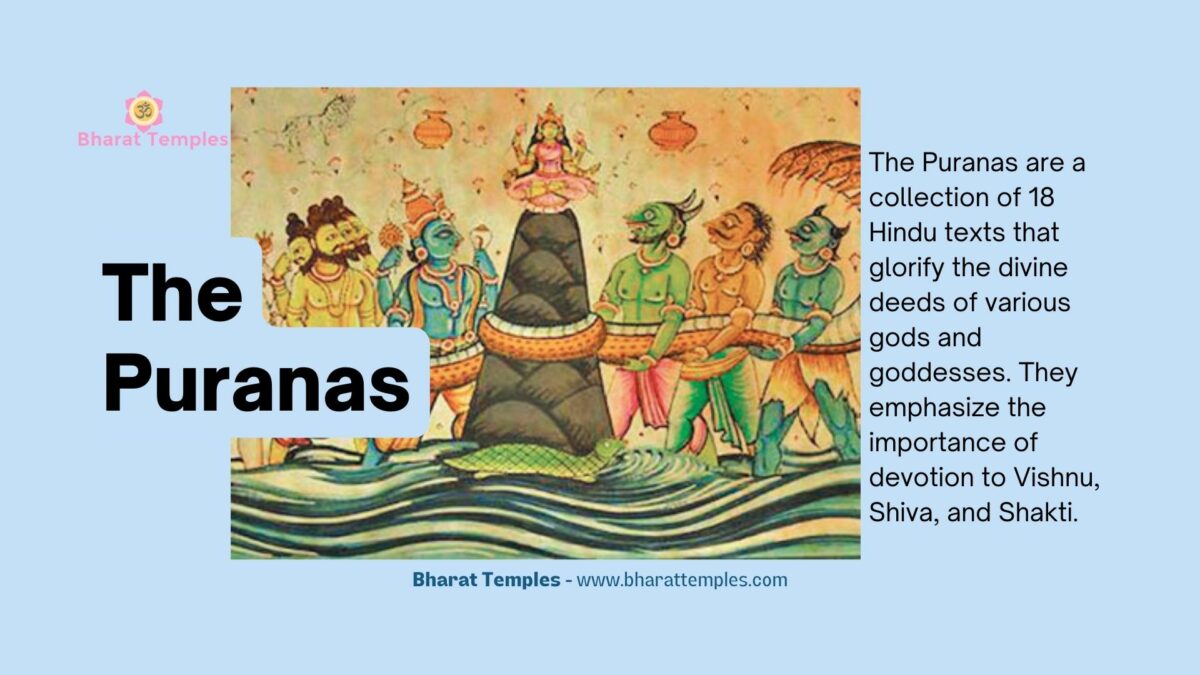The Puranas hold a significant place in Indian culture, weaving together mythology, history, and religious teachings. These ancient texts provide a comprehensive understanding of various aspects of Hinduism, shedding light on cosmology, legends, genealogy, philosophy, and more. In this article, we will explore the fascinating world of Puranas, their origins, contents, and their relevance in contemporary times.
The term “Puranas” is derived from the Sanskrit word “Puranam,” meaning “ancient” or “old.” The Puranas are a vast collection of texts that date back to ancient times, believed to have been composed between 300 BCE and 1500 CE. These texts form an integral part of the Hindu scriptures and are considered to be one of the pillars of Hindu philosophy.
The Origin and Compilation of Puranas
The exact origin and compilation process of the Puranas remain a topic of debate among scholars. According to Hindu tradition, the sage Vyasa is credited with compiling the original Puranas. It is believed that Vyasa divided the Vedas into four parts and assigned each part to a different disciple, who later expanded them into eighteen Puranas.
Classification and Structure of Puranas
The Puranas are classified into two main categories: Mahapuranas and Upapuranas. The Mahapuranas, considered the most important, consist of eighteen texts, while the Upapuranas are a collection of minor Puranas, numbering in the dozens.
The Content of Puranas
The Puranas contain a diverse range of subjects, including cosmology, creation myths, legends of gods and goddesses, genealogies of kings and sages, descriptions of rituals and sacrifices, philosophical discourses, and moral teachings. These texts also provide historical accounts of ancient kingdoms and dynasties, serving as valuable sources for understanding India’s past.
The Puranas are a collection of ancient Hindu texts, consisting of numerous individual works. Here is a list of the eighteen major Puranas:
- Vishnu Purana
- Shiva Purana
- Brahma Purana
- Markandeya Purana
- Bhagavata Purana (Srimad Bhagavatam)
- Vayu Purana
- Linga Purana
- Varaha Purana
- Skanda Purana
- Agni Purana
- Matsya Purana
- Kurma Purana
- Garuda Purana
- Brahmanda Purana
- Padma Purana
- Vamana Purana
- Brahmavaivarta Purana
- Harivamsa Purana
These eighteen Puranas cover a wide range of topics, including cosmology, mythology, genealogy, legends, philosophy, rituals, and historical accounts. Each Purana focuses on different deities, legends, or aspects of Hinduism.
FAQs
The Puranas hold significance for Hindus, but their narratives and philosophical teachings have captured the interest of scholars, researchers, and spiritual seekers from various backgrounds.
Yes, the stories in the Puranas often carry multiple interpretations, allowing individuals to derive diverse philosophical, moral, and spiritual meanings from them.
There are variousonline platforms and books available that provide English translations of the Puranas. Libraries and academic institutions also often have copies of translated Puranas.
While the Puranas contain historical accounts of ancient kingdoms and dynasties, they are not regarded as strictly historical records. They combine historical elements with mythology and symbolism, making it challenging to separate fact from fiction.
Absolutely! The moral and ethical teachings found in the Puranas can be applied in daily life to cultivate virtues, make wise choices, and lead a meaningful existence. They offer valuable insights into human nature, relationships, and the pursuit of spiritual growth.


